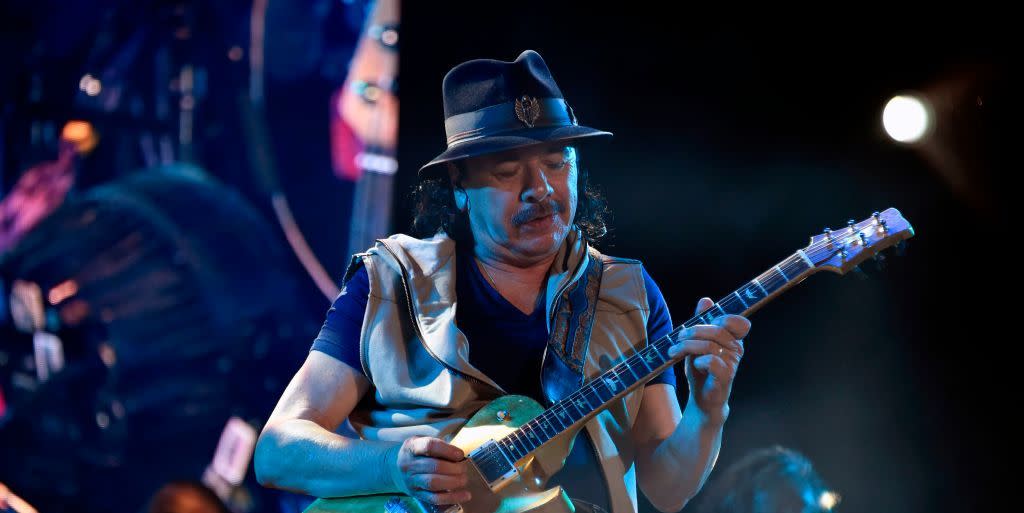What Is Heat Exhaustion, the Condition Carlos Santana Experienced?

Legendary guitarist Carlos Santana is on the mend after stopping a concert on Tuesday in Michigan due to heat exhaustion.
Santana, 74, “was overtaken taken by heat exhaustion and dehydration” during the concert, according to a statement on his website. He was taken to a nearby emergency room and is now “doing well,” the statement says. However, Santana’s show scheduled for Wednesday was postponed.
The news coincides with excessive heat warnings that are popping up across the country. You’ve probably at least heard the warnings before about heat exhaustion but may be fuzzy on the details of what, exactly, this is about. Here’s what you need to know.
What is heat exhaustion?
Heat exhaustion one of several conditions lumped into a category called heat illness or heat-related illness, according to the U.S. National Library of Medicine.
“Heat exhaustion is one of the areas of the spectrum of heat illness,” explains Jason Womack, M.D., chief of the Division of Sports Medicine at Rutgers University’s Robert Wood Johnson Medical School.
Heat exhaustion happens when temperatures are high and especially when it’s very humid, Dr. Womack says. “A hotter and more humid environment makes it more difficult to sweat and cool down,” he says. As a result, your body temperature can rise to dangerous levels.
“Heat exhaustion is the body’s state just prior to heat stroke, which is a life-threatening emergency,” says Nicholas Kman, M.D., emergency medicine physician at The Ohio State University Wexner Medical Center.
What causes heat exhaustion?
In most cases, people develop heat exhaustion and other heat illnesses when they stay out in high temperatures too long, the U.S. National Library of Medicine says.
But everyone is different, and some people are more prone to heat exhaustion than others. Working out in hot weather, being older, very young, sick, or having overweight or obesity also raises your risk, the organization says. “If your body is good at holding onto fluid, you’re less likely to develop heat exhaustion,” says Kathryn Boling, M.D., a primary care physician at Baltimore’s Mercy Medical Center. Being able to sweat well can also help, she says.
And, how dehydrated you are to start matters, too, Dr. Womack says. There’s also this to consider, per Dr. Womack: “Certain people just have a genetic predisposition to be susceptible to heat illness.”
What are the symptoms of heat exhaustion?
These are the most common symptoms of heat exhaustion, according to the Centers for Disease Control and Prevention (CDC):
Heavy sweating
Cold, pale, and clammy skin
Fast, weak pulse
Nausea or vomiting
Muscle cramps
Tiredness or weakness
Dizziness
Headache
Fainting
How is heat exhaustion treated?
If you develop signs of heat exhaustion, the CDC recommends taking these steps:
Move to a cool place
Loosen your clothes
Put cool, wet cloths on your body or take a cool bath
Sip water
If you can, try to stay out of the heat. “Returning to that [hot] environment can cause a return of the symptoms of heat illness,” Dr. Kman says.
When to see a doctor for heat exhaustion
If you take the steps recommended by the CDC and are feeling better, Dr. Kman says you’re probably “in the clear.”
However, the CDC says you’ll want to get medical attention if you throw up, your symptoms get worse, or your symptoms last longer than an hour.
Dr. Boling says it’s important to not brush off symptom of heat exhaustion if you experience them. “Heat exhaustion is serious,” she says. “It can kill you.”
You Might Also Like